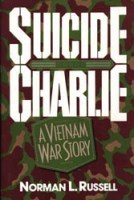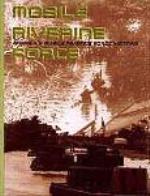
This is a short (225 pages) historical fiction novel written in 1952 by Shelby Foote. I read it in five days. The book is greatness. Foote uses a unique approach to tell the story of the American Civil War battle of Shiloh. He employs the use of first-person perspectives of one protagonists per chapter, Union and Confederate, except chapter six where he uses the twelve members of a squad to give a moment-by-moment commentary of the battle. The novel is divided into seven chapters. Each of the chapters is closely concerned with one of the characters again except for chapter six which gives the views of twelve squad members.
The first chapter takes place the day before the battle and is told by Lieutenant Palmer Metcalfe. He is a young aristocrat from New Orleans. We learn a year early he had been a student at the Louisiana State Seminary under William Tecumseh Sherman. He serves as a staff officer under Confederate commander General Albert Sidney Johnston. He watches as the Confederate army marches through the Tennessee countryside in preparation for a surprise attack upon the Union troops at Pittsburg Landing where their “horses will drink from the Tennessee River tomorrow”. His self-satisfaction is evident as he remembers the complicated attack plan he helped draft. He thinks back on the struggles Johnston went through in bringing his army together for this anticipated decisive blow. The Confederate troops are inexperienced and noisy, and some of Johnston’s generals believe the element of surprise has been lost. Johnston says they will fight despite the conditions.
Chapter Two is the story of Captain Walter Fountain, an Ohio regimental adjutant in the Union Army encamped at Pittsburg Landing. He is the Officer on Duty (OD) though he feels he should not have be an OD as he is the adjutant. He spends night writing a letter to his wife. Through his thoughts, we learn about the Union army’s deliberate advance through Tennessee under General Ulysses Grant. Fountain is homesick yet confident that the war will be over soon. As he writes his letter, he notices the birds and animals becoming noisier and more agitated. Suddenly the Confederate soldiers attack the Union troops. The chapter ends abruptly. I was left with the assumption that Fountain is killed in the initial attack.
Chapter Three comes from the viewpoint of Private Luther Dade. He is scared but determined to do his duty. When the fight does come, Dade is disturbed when he realizes the dead bodies of old friends mean no more to him than those of stranger or Yankees. He stresses of combat are too much for him. He does well in combat. He sustains a minor arm wound and is sent to wait for a doctor. Hours pass. He gets no medical attention. Dade’s arm begins to show signs of infection. He moves toward the sound of firing in search of a doctor. He finds himself in a clearing near Shiloh Church. At the church is Johnston’s staff, gathered around their wounded and dying commander. Dade is captivated by the drama of the scene. He begins to pass out from his wound as the chapter ends.
Chapter Four is narrated by Private Otto Flickner, a Minnesota artilleryman. It is now the first night of the battle. Flickner is trembling at the riverbank with hundreds of other deserters. He rationalizes his actions by quoting what a sergeant of his had said, “I’m not scared, I’m just what they call demoralized.” His search for justification leads him to remember the day’s events: the devastating surprise attack, one failed attempt after another to stand and fight, the endless concussions of incoming enemy artillery fire, and finally his running away because “so much is enough but a little bit more is too much.” He and the other deserters are taunted at and called cowards by some reinforcements that pass by. The taunting forces Flickner to realize that a coward is exactly what he has been. He leaves the riverbank roving through the woods searching for his unit. Somehow he comes upon them getting ready for one last stand. His sergeant who witnessed his simply walking away greets him as if nothing had happened. He returns to his old gun.
Chapter Five concerns Sergeant Jefferson Polly, a Texas cavalryman serving under Nathan Bedford Forrest. A former seminary student, sailor, and soldier of fortune, Polly joined the army because “I wasn’t any better at being a bad man than I was a good one.” His mature and contemptuous point of view tells him that the Confederate army, even though successful on day one, is fighting a inadequately planned and shoddily coordinated battle. That night, Forrest leads Polly and his squad on a reconnaissance mission to Pittsburg Landing. While there they see thousands of Union reinforcements disembarking from steamboats. Forrest and Polly try to alert the confederate generals without success. With the coming of the next day he resigns himself to a day of defeat beside Colonel Forrest.
Chapter Six focuses on an Indiana squad. It is under the command of General Lew Wallace. We hear from all twelve members in the squad. They tell of their efforts to reach the battlefield. We learn of the wrong turn that delayed them for a day. We see the contempt that was poured on them by other troops for their slowness. When the battle’s second day begins, the Indianans and the rest of Wallace’s division are at the forefront of the resurgent Union attack. At the end of the fight, two of the Indianans are dead. The ten survivors wonder why they lived and the others died.
Chapter Seven returns to Lieutenant Metcalfe as he staggers down the road to Corinth. We see him as one of the beaten Confederate army. He remembers the death of General Johnston. He recalls how events spun out of control in the aftermath of the general’s death. He reflects on how the disorganized and leaderless Confederate army fell victim to a surprise Yankee attack the next day, how Johnston’s old-fashioned gallantry had been no match for the reality they had encountered. In the disorder of the retreat he falls in with Forrest and Polly. He participates in their valiant rearguard action at Fallen Timbers. Metcalfe decides to join Forrest’s unit; even as an enlisted man if necessary. His viewpoint changes to believing that any hope the Confederacy has lies with men like Forrest rather than men like Johnston. The book ends with Metcalfe tending to a delirious amputee in a wagon. I assume it is Luther Dade.
Read and reviewed by Jimmie A. Kepler.
Like this:
Like Loading...
Like this:
Like Loading...
 Eight Stars to Victory: A History of the Veteran U.S. Ninth Infantry Division by Joseph B. Mittelman was written for and published by the Ninth Division Association in 1948. The book tells of how eight battle stars were won. It covers from the shores of North Africa, in 1942, to the banks of the Elbe, in 1945. Over 50,000 men served in the Ninth Infantry Division during World War II. The division had nearly 25,000 casualties including 4,747 killed in action. The copy of the book I read was found through the Dallas Public Library.
Eight Stars to Victory: A History of the Veteran U.S. Ninth Infantry Division by Joseph B. Mittelman was written for and published by the Ninth Division Association in 1948. The book tells of how eight battle stars were won. It covers from the shores of North Africa, in 1942, to the banks of the Elbe, in 1945. Over 50,000 men served in the Ninth Infantry Division during World War II. The division had nearly 25,000 casualties including 4,747 killed in action. The copy of the book I read was found through the Dallas Public Library. 










